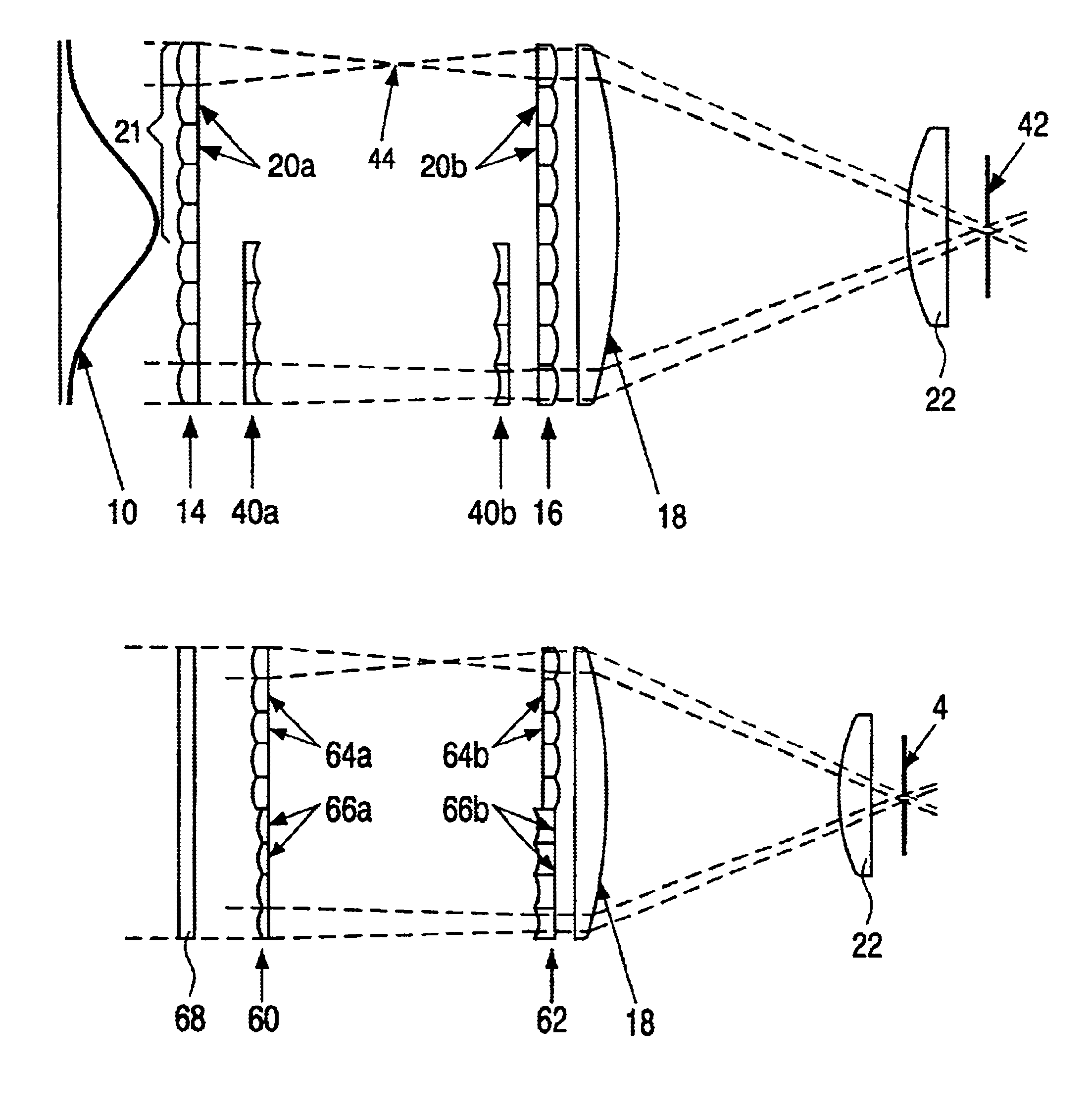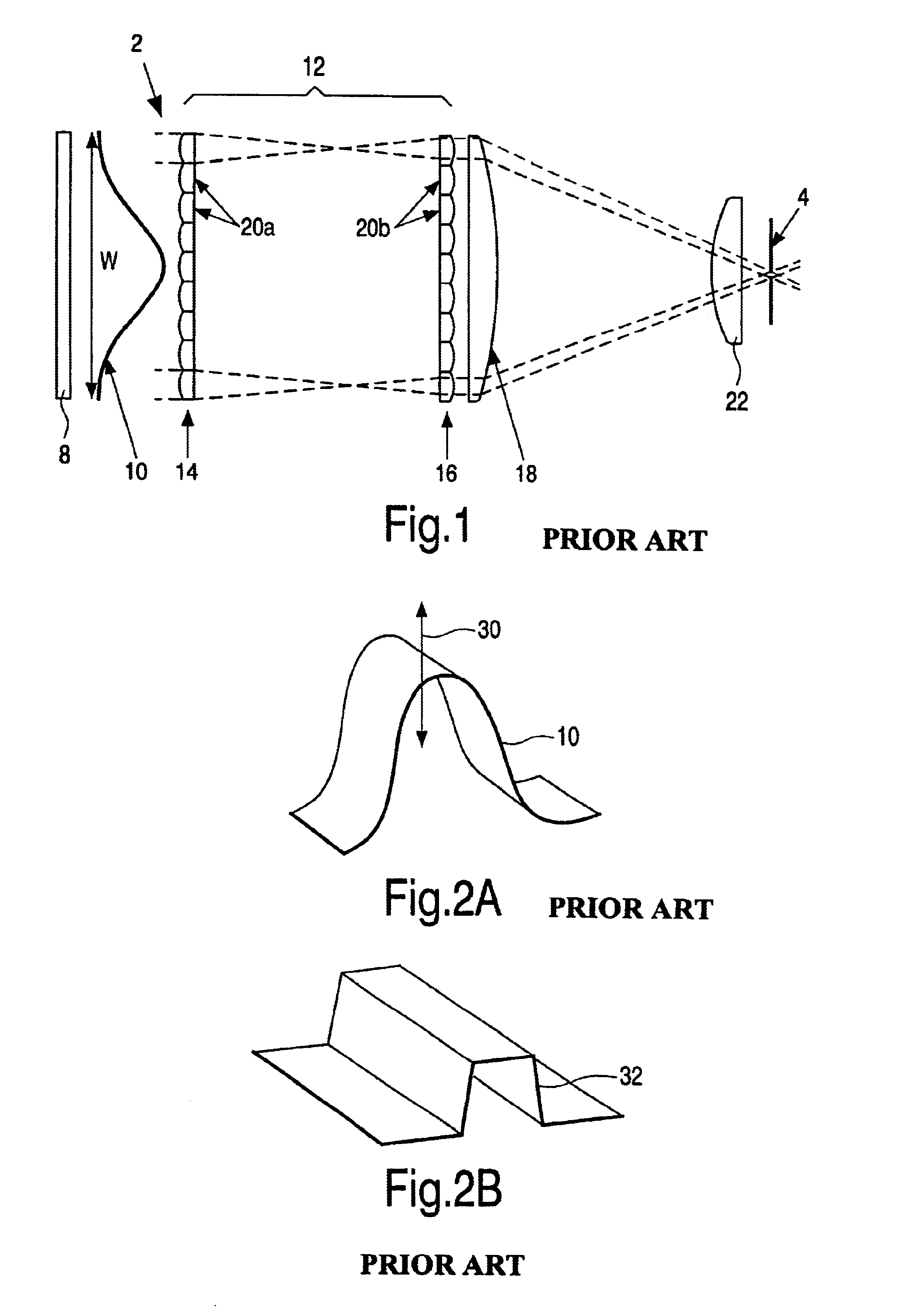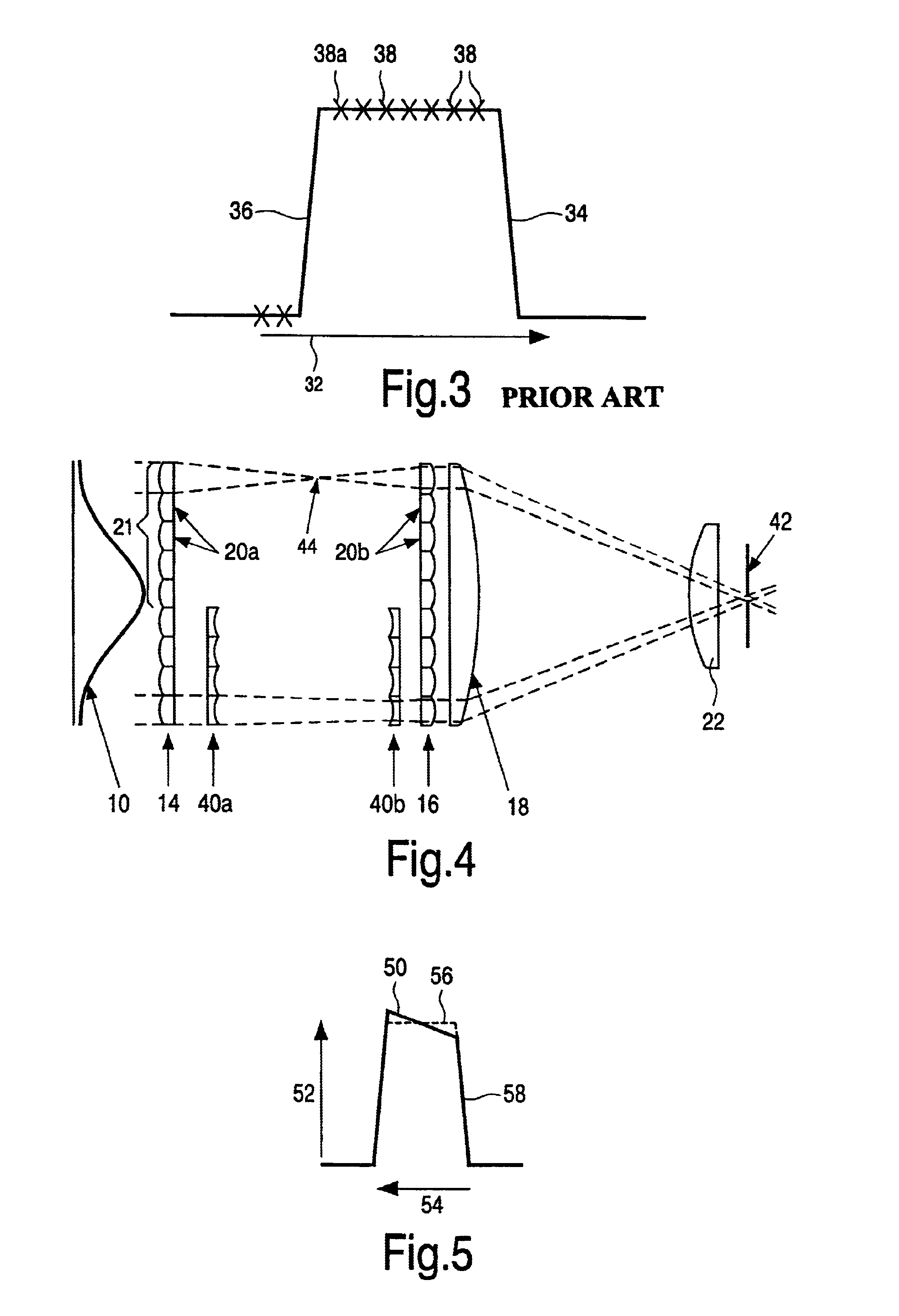Laser system with mixed polarity beamlets
a laser system and beamlet technology, applied in the field of laser systems, can solve the problems of poor uniformity, poor yield, poor uniformity of laser crystallisation process, etc., and achieve the effects of preventing inversion, reducing the loss of beam energy, and increasing the fluence jitter
- Summary
- Abstract
- Description
- Claims
- Application Information
AI Technical Summary
Benefits of technology
Problems solved by technology
Method used
Image
Examples
Embodiment Construction
FIG. 1 shows selected elements of a known laser system 2 comprising a homogeniser 12. The homogeniser 12 is adapted to produce a laser output suitable for crystallisation of a semiconductor sample. The system 2 is for radiation of a sample (not shown) with a line beam 6 having a controlled intensity profile. Typically, the sample comprises a silicon film on an insulating substrate. The line beam 6 is scanned across the surface of the sample, and this is normally achieved by mounting the sample on a movable support (not shown).
The laser system comprises a laser source 8 which may generate a beam having a semi-Gaussian intensity profile. The output of the laser source is a light front or beam. In one dimension, transverse with respect to the direction of propagation of the beam, the intensity varies following a normal distribution, as represented by curve 10, whereas the intensity is constant following the transverse dimension orthogonal thereto. The width of the beam W may be approxi...
PUM
| Property | Measurement | Unit |
|---|---|---|
| width | aaaaa | aaaaa |
| width | aaaaa | aaaaa |
| width | aaaaa | aaaaa |
Abstract
Description
Claims
Application Information
 Login to View More
Login to View More - R&D
- Intellectual Property
- Life Sciences
- Materials
- Tech Scout
- Unparalleled Data Quality
- Higher Quality Content
- 60% Fewer Hallucinations
Browse by: Latest US Patents, China's latest patents, Technical Efficacy Thesaurus, Application Domain, Technology Topic, Popular Technical Reports.
© 2025 PatSnap. All rights reserved.Legal|Privacy policy|Modern Slavery Act Transparency Statement|Sitemap|About US| Contact US: help@patsnap.com



